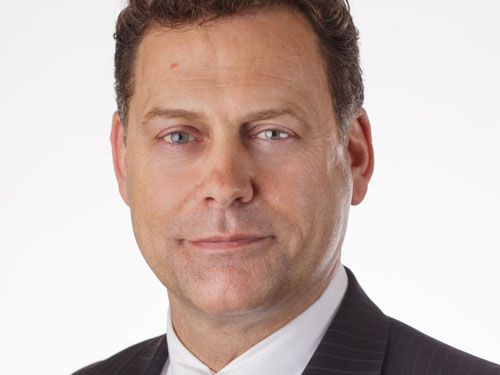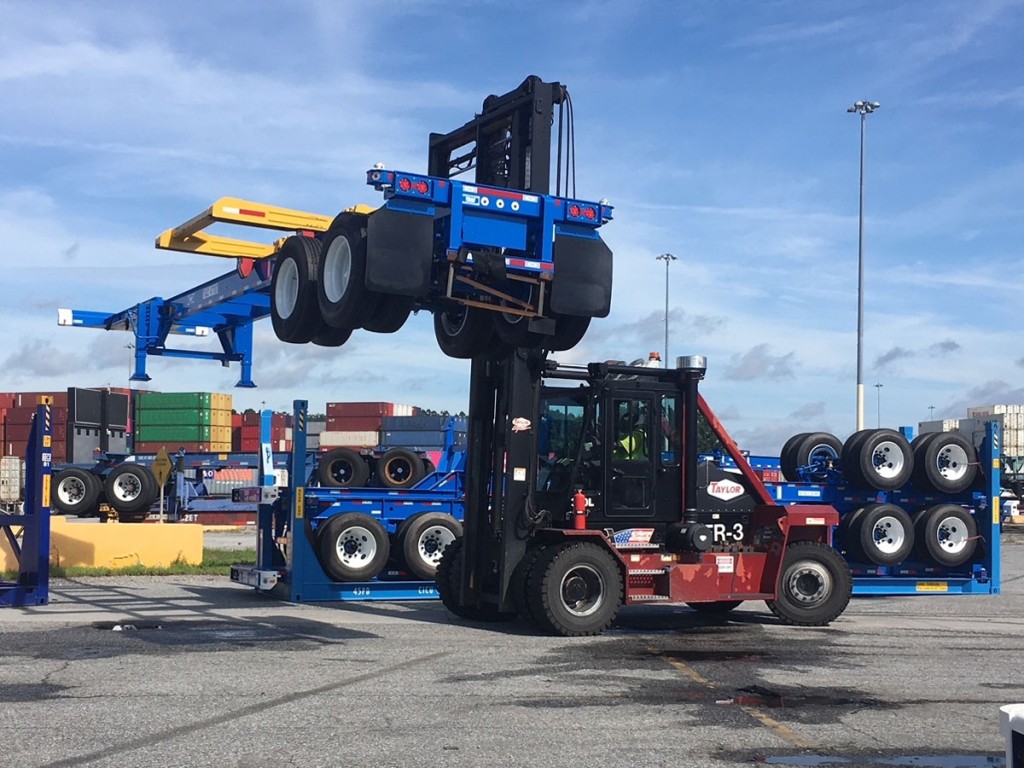Mike Wilson is the CEO of Consolidated Chassis Management, better known as CCM and is, as the name implies, is a chassis management business. The lowly chassis is often overlooked but is an ever so essential feature of the container segment in the supply chain. After all, without chassis - a container is just another steel box. And keeping those chassis rolling under the steel boxes is a complex business that has undergone significant changes in recent years.
Before joining CCM, which incidentally just celebrated its 15th anniversary, Wilson had a career on the ocean carrier side of the shipping equation with stops at Hamburg Sud, ACL (Atlantic Container Line), United Arab Agency, Crowley, and U.S. Lines. By the time he joined CCM in 2019, the chassis leasing side of containerization was undergoing a significant change in the business model.
The inefficiency of chassis utilization was having an impact through the entire landside operations of the supply chain. “One of the metrics we used is how many containers per year a chassis could carry or does carry?” Wilson recalled. Adding, “Back then we were just breaking 20 containers [moves] per year [on a chassis], which isn’t very efficient. So, the lines got together and said, “There’s probably a better way to do this. Let’s start pooling them into a gray fleet and sharing them so that when one guy’s volume is up and the other guy’s volume is down, we could share chassis.”

Into the Pool
The “pooling” of chassis had an immediate effect as utilization improved by 30%. Furthermore, the pooling enabled the carriers to absorb a significant growth in volume in the early 2000s without adding additional chassis.
The success of “pooling” spawned another idea. “The thought came about that we should probably have a single management company for the lines operate these chassis for us so that we could let go of the day-to-day responsibilities of managing chassis and focus on the responsibilities of running a container line. As a result, the concept of CCM, Consolidated Chassis Management was born. Later in 2005, CCM was incorporated, and the journey began. Around the same time, we actually helped to set up the original HRCP (Hampton Roads Container Pool), which is in Hampton Roads. That was a collaborative project between OCEMA (Ocean Equipment Management Association) and VIT (Virginia International Terminal), where we created the framework for the future chassis pooling model under CCM. Once we started Hampton Roads, the railroads also decided it was a good idea. The inland pools started in Denver, Salt Lake City, Memphis, and Chicago, then on to Kansas City and St. Louis. Then, we went to Florida and the South Atlantic. After about six or seven years, we had chassis pools throughout the eastern United States, as well as in Denver and Salt Lake.”
Wilson said that at its peak CCM had 142,000 chassis under management but now they manage around 85,000 chassis including a private pool CCM manages for the container leasing company FlexiVan.
But this configuration for the chassis pool business was short-lived. As Wilson explains the composition of the chassis leasing business began changing again around 2008, some say driven by the Lehman crisis in 2008. The liner business was significantly hit financially. As a result, some lines wanted to divest themselves of their chassis…. And they sold their chassis to the [chassis] leasing companies. Then the leasing companies, as opposed to the lines, became the primary contributors to the pools.”
Even with this change, still there was more wrinkles to come for the chassis provision business model. “Over the years; perhaps four or five, the leasing companies decided, they would rather control their own destiny versus operate via our pools.’ So, they started to pull chassis out and set up their own proprietary provision models. This further fragmented chassis provision. There are cooperative pools that CCM runs. There are proprietary pools that are run by DCLI, TRAC and FlexiVan. And there are some hybrid models, depending upon geographic location and market demands. Additionally, many truckers are operating their own chassis now. Some BCOs (Beneficial Cargo Owners) are also operating their own chassis. As a result, the model has become somewhat fragmented, particularly in those zones where CCM does not operate. But CCM is still going strong as you can see with the evolution of the South Atlantic, which is our largest pool at about 60,000 chassis.”

South Atlantic Container Pool – SACP 3.0
The “evolution” of the South Atlantic pool has gone through a number of stages. As Wilson explains, “What’s interesting is that we’ve been operating since 2007 in the South Atlantic. About three years ago, the ports came to us and said, ” Look, these chassis are getting old, and we need to have a different approach. We need to have a better program that addresses both the quantity of chassis available as we all as the quality of the chassis.”
As a result, CCM in collaboration with the shipping lines, Ports and chassis leasing companies developed a program to improve the quality of chassis and address fleet shortfalls. According to Wilson, this was a program to “upgrade” the core components of the chassis including radial tires, LED lights, and antilock brakes. These components would need to be changed out within a three-year cycle, which started in Q1 2019 and actually just ended in March of 2022. “Unfortunately, the program didn’t work as planned. We realized that as CCM’s role was more “custodial” than hands-on, we could not control the chassis asset.”
Under the 2019 business model, the leasing companies were responsible for facilitating chassis upgrades for the pool, but it didn’t work out as evidenced by only 50% of the fleet receiving the radial tire upgrade. It was clear a new model was needed, “So, we went back to the drawing board with our colleagues at OCEMA, the Ports and CCM. After several months we came up with what we are calling, the SACP 3.0 single provider model. The primary change in this mode from prior is that CCM will have control of the assets via long term leases similar to how the [container] lines used to approach chassis provision, but the key is we now merge that approach with our operating processes and technology specifically designed for interoperable chassis management…”
The result was a shift in quality control and fleet size responsibility from the leasing companies to CCM. “So, no longer are we [CCM] restricted by the old model where we relied on others to have enough assets or having the right quality program to keep the chassis in a good state. Now that’s all on CCM. We have about 60,000 chassis in the fleet today, as I said. Approximately 45,000 of them will be refurbished to be like new in the next three to four years.” Wilson adds that with the new model, “We will have an entirely refurbished fleet. And we’re going to add about 15,000 new to that. We’ll be in the 2.0 model Through September of next year, when the 3.0 model starts in October of ‘23. This period will help ensure we have enough time to ramp up and get things moving…”

Supply Chain Disruption and Chassis
Like every other part of the supply chain, the chassis leasing business hasn’t been immune to the disruptions caused by the COVID pandemic and geo-political issues, including sanctions, tariffs, and other trade related incidents. “Right now, we’re in a bit of a pickle because of several things hitting all at once. The most prominent issue is the volume surge that we saw during COVID, and which partially continues today. It’s unprecedented. Add to that the resulting congestion driven by the volume pushing into a limited supply chain. Chassis were taking longer to turn [from delivery of container to return] in many cases more than doubling from 7 days to 15 days. As a result, we needed more chassis not just for volume, but for the extend turn as well. Basically, there just weren’t enough chassis. From a “silver lining” perspective, most of America now knows the terms ‘supply chain’ and ‘chassis’ when they didn’t have a clue what it was before.”
Despite the disruptions Wilson feels that there will be some improvements as the industry makes its own adjustments. “So, as we work through the issues, I think we’ll see some improvements as far as how chassis are provided. And one of the evolutions, certainly, is what we’re doing in the South Atlantic. But I think you’ll see additional technology being applied to drive further improvement in the future.”

